10 ‘Normal’ Foods the World Avoids—And 10 Global Favorites Worth Exploring

In our culinary journey, we encounter a variety of foods, some of which are cherished in one part of the world while avoided in others. This exploration covers ten foods often avoided globally and ten that are favored and worth trying. Each item is presented with a unique description, offering insight into cultural taste preferences and culinary delights.
1. Processed Cheese (like American cheese slices)

Processed cheese, particularly in the form of American cheese slices, is a staple in many American households, often used in burgers and sandwiches. However, its overly artificial taste and texture don’t appeal to many outside the U.S. In various countries, this cheese is viewed as lacking in flavor and containing too many additives. The bright orange hue, often achieved with dyes, also deters cheese purists who prefer more traditional varieties. The convenience of these individually wrapped slices doesn’t outweigh the preference for natural, unprocessed cheeses in many cultures around the world.
2. Paneer (India)
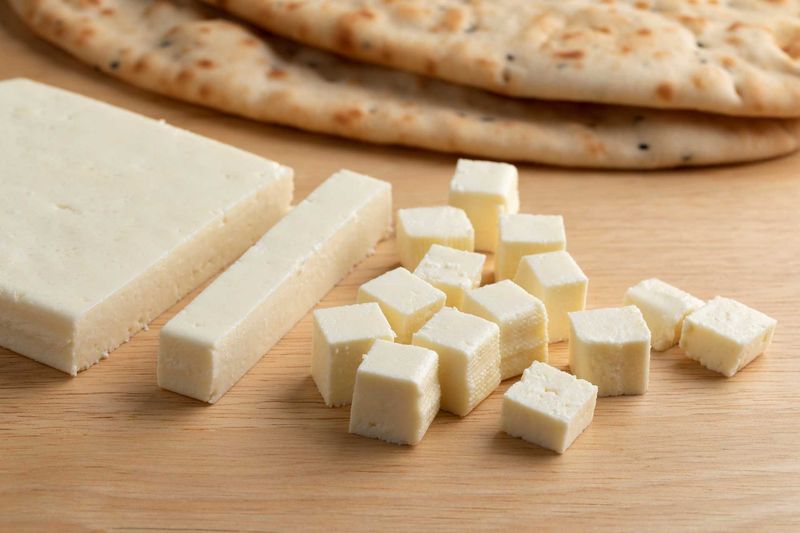
Paneer, a beloved Indian cheese, offers a mild taste that complements various spices found in Indian cuisine. Its non-melting property allows it to be grilled or fried without losing its shape. Used in dishes like palak paneer or paneer tikka, it’s a favorite among vegetarians and meat-eaters alike. The cheese’s fresh, slightly crumbly texture absorbs flavors beautifully, making it a versatile addition to many recipes. Unlike processed cheeses, paneer is made from fresh milk and a souring agent, providing a more natural and wholesome option.
3. Sugary Breakfast Cereals

Sugary breakfast cereals line supermarket aisles with their vibrant packaging and promise of a sweet start to the day. While these cereals are a childhood favorite in many Western countries, others view them skeptically. The high sugar content and artificial flavors are concerning for those prioritizing nutrition. Many cultures prefer a savory or less sweet breakfast, seeing these cereals as more of a dessert than a nourishing meal. Despite their convenience, the health implications and lack of natural ingredients make them less appealing on a global scale.
4. Congee (China)
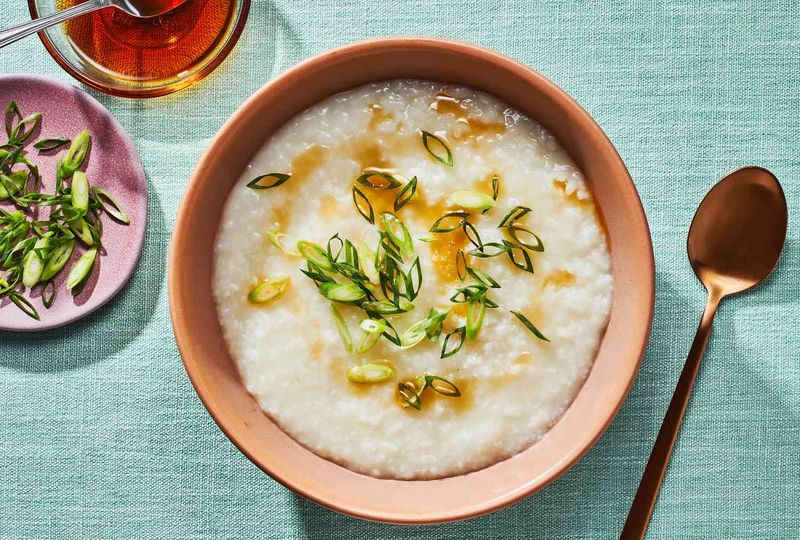
Congee, a comforting rice porridge, holds a cherished place in East Asian breakfasts. Its simplicity allows for customization, with toppings like pickled vegetables, meats, or century eggs. The porridge’s soothing texture makes it popular among all ages, often considered a go-to comfort food when feeling under the weather. A staple across China and neighboring countries, congee offers a balance of nutrients and flavors, contrasting sharply with sugary cereals. This dish not only satisfies the palate but also embodies the warmth and hospitality of traditional Asian breakfasts.
5. Peanut Butter and Jelly Sandwiches

The peanut butter and jelly sandwich is an American icon, often packed in school lunches across the country. While nostalgic for many, its sweetness and unusual combination of flavors can puzzle international palates. The mix of sticky peanut butter with sugary jelly may seem unbalanced to those accustomed to more savory or complex meals. Despite its simplicity, this sandwich highlights the American penchant for convenience and sugary flavors. Globally, it’s often viewed as a childhood treat rather than a culinary delight to be savored.
6. Kaya Toast (Singapore/Malaysia)

Kaya toast, a delightful breakfast or snack from Singapore and Malaysia, pairs coconut jam with butter on crispy toast. Often served with soft-boiled eggs and soy sauce, it offers a blend of sweet and savory flavors. The kaya, a coconut and egg jam, provides a rich, aromatic experience. This beloved dish is a testament to the region’s culinary creativity, transforming simple ingredients into a unique delight. Unlike its American counterpart, kaya toast offers a multi-layered taste adventure that resonates with both locals and visitors.
7. Meatloaf
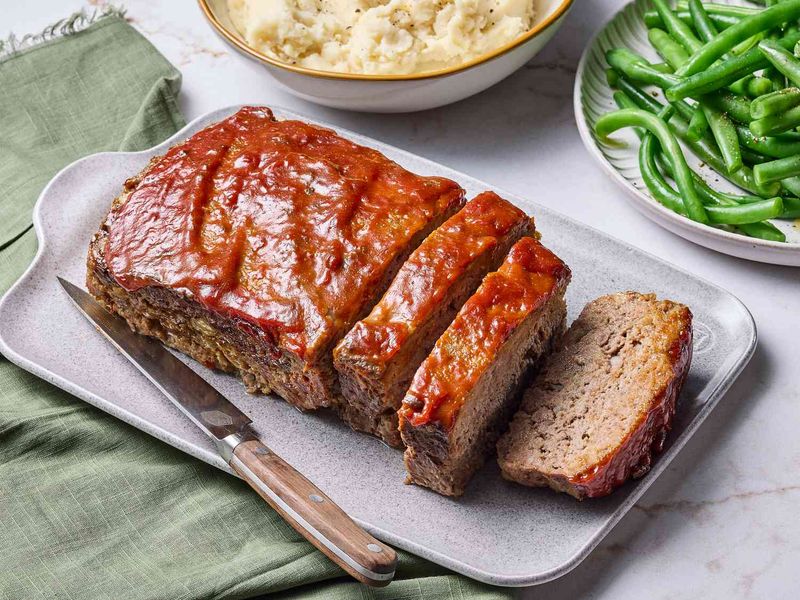
Meatloaf, a comfort food staple in the U.S., often draws mixed reactions internationally. Viewed as dry or uninspiring, it sometimes fails to excite those accustomed to more spice and flavor. Traditionally made from ground meat, breadcrumbs, and seasonings, it’s often overshadowed by more vibrant meat dishes around the world. Despite its potential for customization, the basic presentation lacks the visual and taste appeal that many global meat dishes possess. It’s a classic example of a dish that’s beloved in one culture but remains an enigma in others.
8. Kefta or Kofta (Middle East, North Africa, South Asia)

Kefta or Kofta, a flavorful dish from the Middle East, North Africa, and South Asia, captivates with its aromatic spices and herbs. Ground meat, typically beef or lamb, is mixed with onions, garlic, and a variety of spices, then shaped into skewers or patties. Grilled to perfection, these juicy morsels offer a taste explosion that contrasts starkly with the modest meatloaf. Served with accompaniments like hummus or pita, kefta is a beloved staple that celebrates the bold flavors and communal dining culture of its regions.
9. Grits
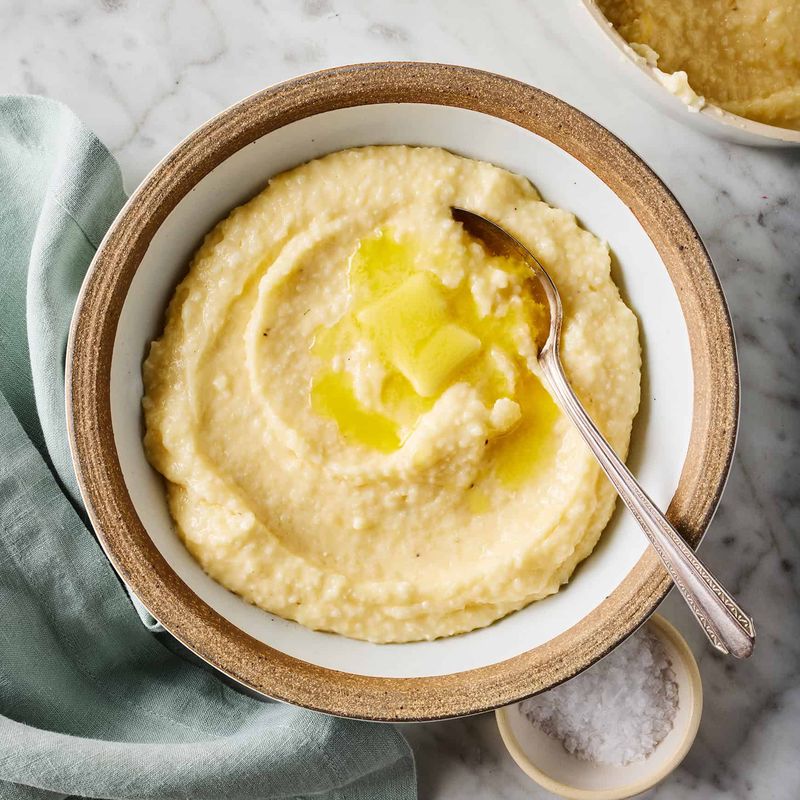
Grits, a Southern U.S. breakfast favorite, are made from ground corn and have a unique texture that intrigues and sometimes perplexes those unfamiliar with them. Often served with butter, cheese, or shrimp, grits offer versatility but are often overshadowed by similar dishes globally. The dish’s coarse consistency and mild flavor can be an acquired taste, not easily embraced outside the Southern States. While beloved for its comforting qualities, grits don’t always translate well to international palates that may prefer more familiar grain dishes.
10. Polenta (Italy)

Polenta, Italy’s answer to grits, is a versatile dish that can be served creamy or allowed to set and then grilled. Made from cornmeal, it forms a base for a variety of toppings, from rich tomato sauces to savory cheeses. The texture and preparation methods offer a refined alternative to the Southern staple, appealing to those who prefer a smoother consistency. Its adaptability in both rustic and gourmet settings makes it a cherished part of Italian cuisine. Unlike grits, polenta’s culinary heritage adds an element of sophistication.
11. Root Beer

Root beer, with its distinct herbal and somewhat medicinal flavor, is a quintessential American soda that perplexes many abroad. Some find its taste reminiscent of medicinal syrups, leading to a divided opinion on its appeal. Despite its popularity in the U.S., where it often features in floats and other nostalgic treats, the unique flavor profile can be off-putting to those not raised on it. The beverage’s quirky taste remains a curiosity outside America, often tried once but rarely revisited by international drinkers.
12. Lassi (India)

Lassi, a refreshing yogurt-based drink from India, offers a cool respite from spicy dishes. Whether sweet or savory, this probiotic-rich beverage is a staple in Indian households. Flavored with mango, rosewater, or spices like cumin, lassi provides a delightful contrast to the often sugary sodas preferred in the West. Its health benefits and invigorating taste make it a beloved choice in hot climates. Lassi’s rich cultural roots and versatile nature ensure it remains a cherished part of Indian dining experiences.
13. Jell-O and Gelatin Desserts

Jell-O, a staple of American dessert tables, often intrigues and repels with its jiggly texture and artificial coloring. While fun for children, this gelatin dessert doesn’t appeal to those who favor more traditional sweets. In many countries, the bright hues and synthetic ingredients make Jell-O less appealing compared to natural or artisanal desserts. The playful nature of these sweets fails to translate to cultures that prioritize texture and authenticity in their confections. Despite its playful appeal, Jell-O remains a largely Western curiosity.
14. Turkish Delight or Mochi (Japan)
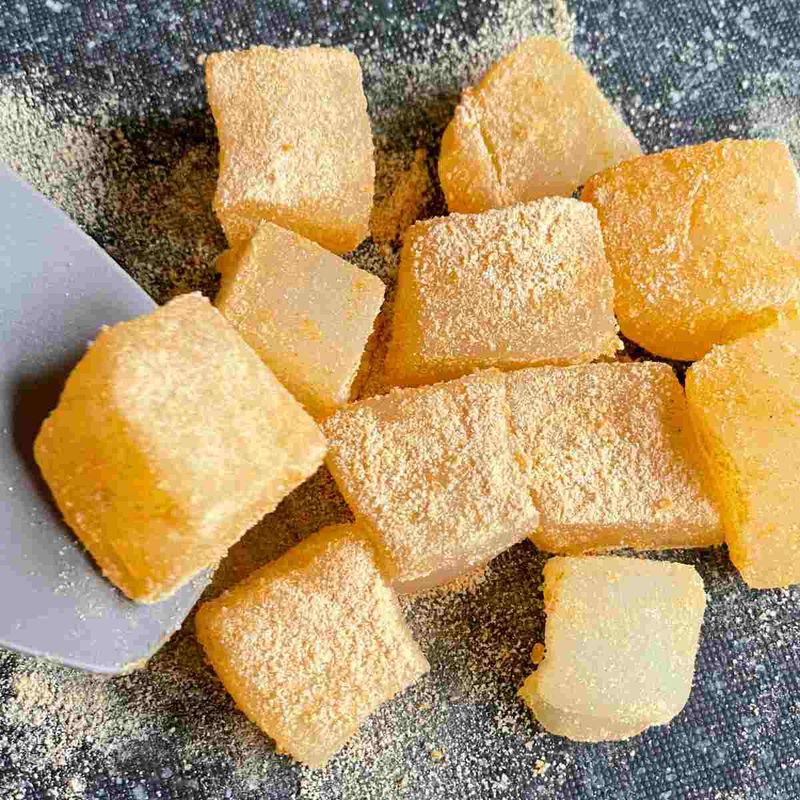
Turkish Delight and Mochi offer a chewy and nuanced dessert experience far removed from Jell-O. Turkish Delight, with flavors like rosewater and pistachio, provides a fragrant and exotic treat. Mochi, a Japanese delicacy, features a glutinous rice coating with fillings such as sweet red bean paste, offering a delicate chewiness. Both desserts celebrate their cultural heritage through subtle flavors and unique textures. Unlike gelatin desserts, they prioritize authenticity and craftsmanship, inviting sweet lovers to embrace a more sophisticated palate.
15. White Bread

White bread, a common fixture in Western diets, often faces criticism for its lack of nutrients and flavor compared to whole grain alternatives. Its soft texture and mild taste make it a popular choice for sandwiches, but many cultures prefer heartier, fiber-rich breads. The industrialized production and additives used in white bread are less appealing to those seeking natural options. Around the world, bread is celebrated for its depth of flavor and nutritional value, whereas white bread is often seen as a less desirable option.
16. Injera (Ethiopia)
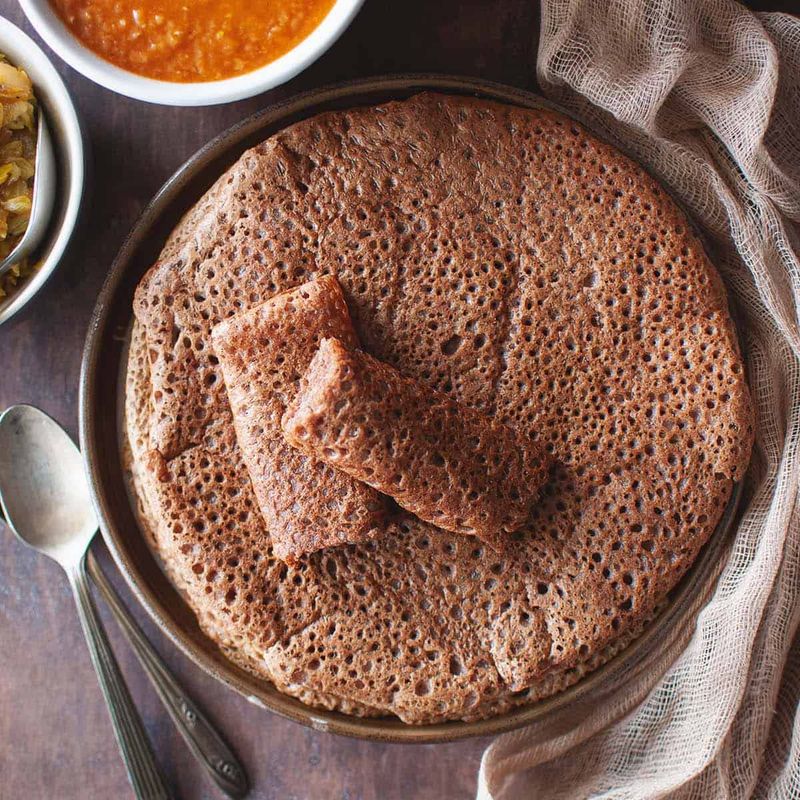
Injera, an Ethiopian staple, doubles as both a bread and utensil, perfect for scooping up delicious stews. Made from teff flour, this sourdough flatbread has a unique, spongy texture and a slightly tangy flavor. Its cultural significance and versatility make it a beloved part of Ethiopian dining. Sharing a meal with injera fosters community and tradition, offering a hands-on dining experience. Unlike white bread, injera provides a captivating culinary journey, deeply rooted in its heritage and appreciated for its distinctive taste and nutritional benefits.
17. Spray Can Whipped Cream

Spray can whipped cream is a convenient topping for desserts, yet it often leaves a chemical aftertaste that detracts from its appeal. Though popular for its ease of use, many prefer the rich, homemade taste of freshly whipped cream. The pre-packaged option is seen as artificial compared to the indulgent texture of real cream. In culinary circles and across countries, emphasis is placed on the quality and authenticity of ingredients, making the spray can version less desirable. Its convenience remains its primary virtue, but taste often triumphs.
18. Clotted Cream (UK)
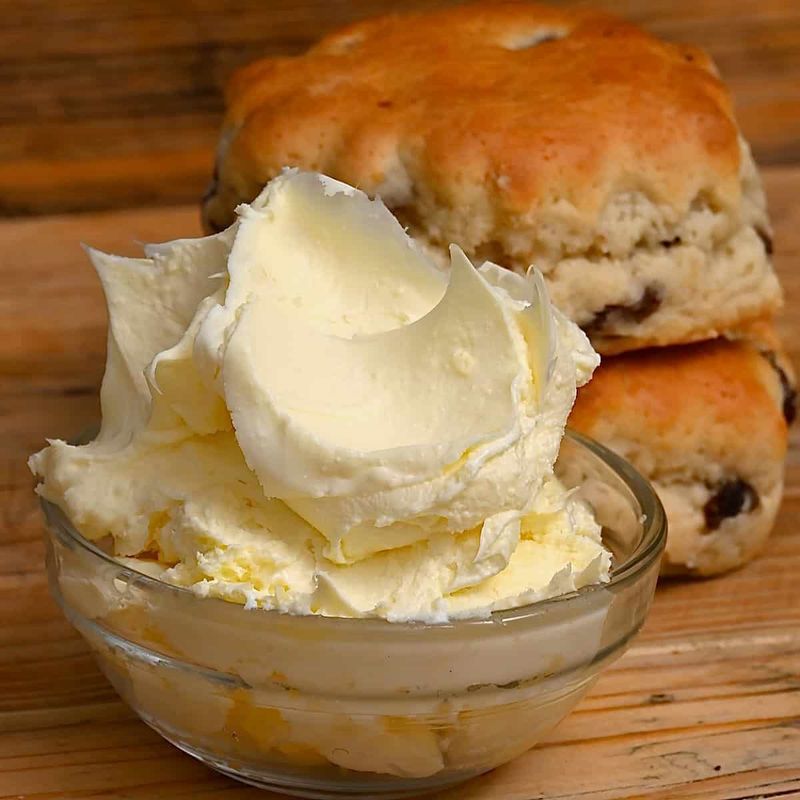
Clotted cream, a British delicacy, epitomizes indulgence with its rich and creamy texture. Traditionally served with scones and jam during afternoon tea, it offers a taste of luxury. The slow cooking process results in a thick, buttery cream that contrasts with the quick convenience of spray-can whipped cream. Its golden crust and full flavor make it a cherished component of English culinary traditions. Clotted cream invites appreciation for quality and heritage, transforming simple baked goods into a gourmet experience cherished by those who savor authenticity.
19. Marshmallow-Topped Sweet Potato Casserole

Marshmallow-topped sweet potato casserole is a festive American dish often seen on holiday tables. The combination of sweet potatoes with a sugary marshmallow topping can be puzzling for those outside the U.S. This dish blurs the line between dessert and side dish, highlighting the American love for sweet flavors. While nostalgic for many, its overt sweetness and unusual pairing are less appreciated globally. The casserole’s unique blend often fails to resonate with international palates that prefer more savory or balanced dishes.
20. Tteokbokki (Korea)
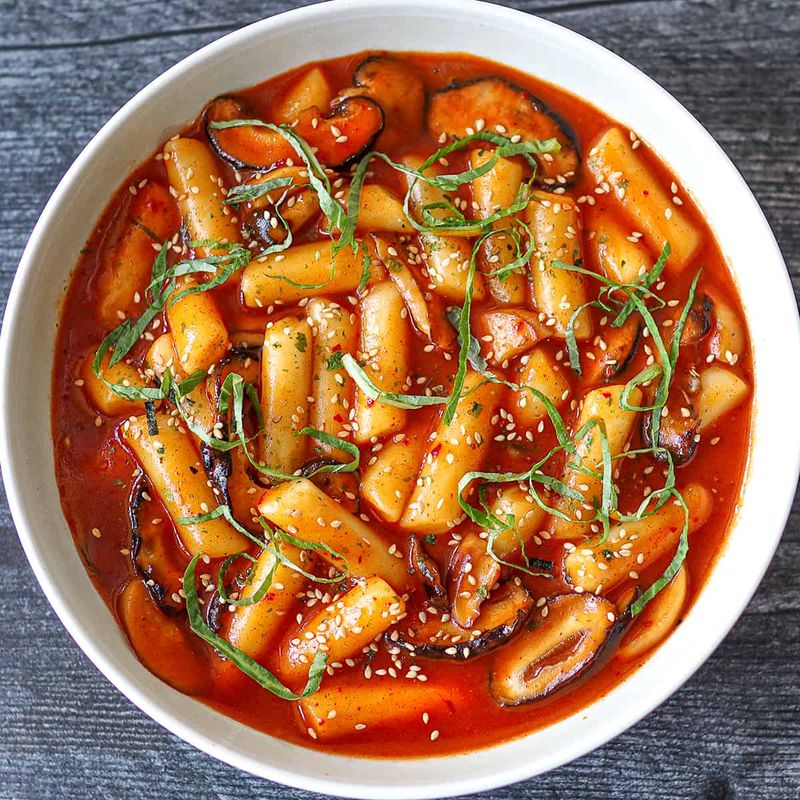
Tteokbokki, a popular Korean street food, offers a chewy and spicy delight that captivates with its bold flavors. Made from glutinous rice cakes and a spicy gochujang sauce, this dish delivers a satisfying kick. Unlike the sweet potato casserole, tteokbokki embraces savory and spicy elements, creating an unforgettable taste experience. This dish is beloved for its comforting nature and ability to bring warmth during Korea’s colder months. Tteokbokki’s unique texture and vibrant flavors invite culinary exploration, offering a spicy alternative to traditionally sweet dishes.
